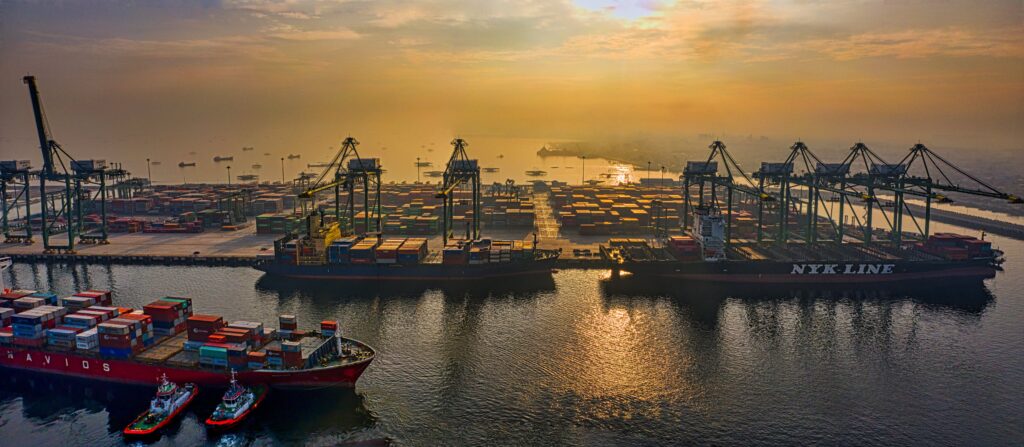The Importer Exporter Code (IEC) is a crucial 10-digit identification number issued by India’s Directorate General of Foreign Trade (DGFT). It is mandatory for businesses engaged in importing and exporting goods, serving as a gateway for accessing global markets and facilitating various international trade processes. The IEC is recognized by customs, the Export Promotion Council, and other trade authorities, making it essential for Indian companies to have an IEC to participate in global trade.
IEC(Import Export Code) is a mandatory identification document for carrying out any import/export activity in the Country. A business cannot make any import/export supply until and unless IEC has been obtained except under expressly provided exemptions. Earlier after making an application for IEC, a separate identification number used to be issued by the department. But after the introduction of GST, the PAN of an individual or a business entity acts as his IEC number after making an application with DGFT(Directorate General of Foreign Trade). The application is approved on a self-certification basis using the authorised representative’s digital signature or using aadhar based KYC.

Benefits of IEC
1.Facilitates Global Trade: Essential for importing and exporting goods.
2. Customs Clearance: Simplifies the process of clearing shipments.
3. Government Schemes: Enables businesses to benefit from export-promotion schemes.
4. No Filing of Returns: No need to file returns once obtained.
5. Lifetime Validity: Remains valid for the lifetime of the entity.
6. Bank Transactions: Necessary for foreign trade transactions with banks.
7. Easy Processing: Straightforward digital application process.
8. Recognition: Adds credibility and recognition by trade and export bodies.
What Is an IEC Modification?
ll holders of the Importer Exporter Code (IEC) are now mandated to update and verify their IEC details annually, regardless of whether there have been changes. The online system must complete this process between April and June each year. Non-compliance will result in the deactivation of the IEC, consequently blocking any import or export activities.
Following Notification No. 58/2015-2020, the Directorate General of Foreign Trade made significant amendments to the Importer Exporter Code (IEC) provisions in chapters 1 and 2 of the Foreign Trade Policy (FTP). These amendments include the following key points:
- Mandatory Annual Update: Every IEC holder must ensure their IEC details are updated electronically annually during April-June.
- Confirmation of Unchanged Details: In cases with no changes to the IEC details, this status must be confirmed online within the same period.
- Deactivation for Non-Update: An IEC will be de-activated if it is not updated within the stipulated timeframe.
- Reactivation Post Deactivation: A de-activated IEC can be reactivated upon successful updating. However, this reactivation is subject to compliance with other FTP provisions, and non-compliance may invite additional actions.
- Scrutiny and Compliance: IECs may be flagged for scrutiny. The IEC holder is responsible for promptly addressing any risks or issues flagged by the system. Failure to do so will result in the deactivation of the IEC.
Details That Can Be Modified
During the IEC renewal process, businesses can update:
– Registered and branch addresses
– Contact information (mobile numbers and email IDs)
– Bank account details
– Directors or partners in the business
– Nature of business activities
Deadline for IEC Modification
The update must be completed annually between April and June, with the final deadline being June 30th.
Required Documents for IEC Modification
A recent photograph of the applicant
– Self-attested PAN card of the entity
– Proof of address (Sale Deed, Rent Agreement, latest utility bills)
– Pre-printed cancelled cheque or bank certificate
Procedure to Update IEC
1.Access the DGFT official website and select the IEC profile management option.
2. Click on the “update IEC” option and log in.
3. If not registered, complete the registration process.
4. Link the IEC using the OTP sent to the registered email ID.
5. Update details or confirm unchanged details and save each section.
6. Submit the application summary with the Digital Signature Certificate (DSC) of the registered person.
7. The updated IEC will be reactivated and submitted to the Customs system.
FAQs
What is IEC modification?
IEC modification refers to updating or making changes to the Importer Exporter Code (IEC), a unique 10-digit code issued to businesses involved in import and export in India. This update could include changes to business details, such as the address, contact information, or bank details linked with the IEC.
Why is it necessary to update the IEC yearly?
As per recent regulations by the Directorate General of Foreign Trade (DGFT), IEC holders must review and confirm their IEC details yearly, even if there are no changes. This mandatory update ensures that the IEC details are current and correct in DGFT’s records.
